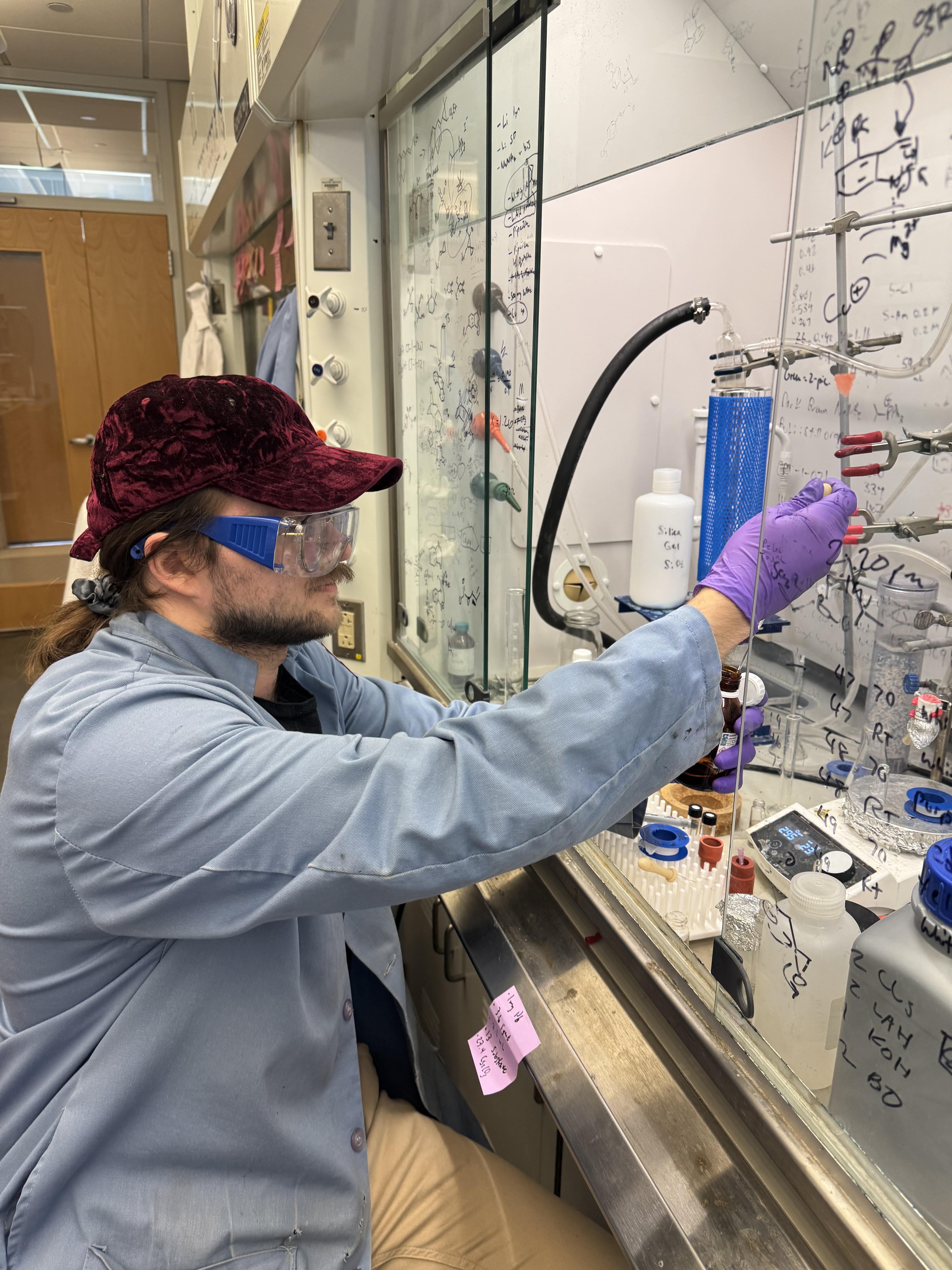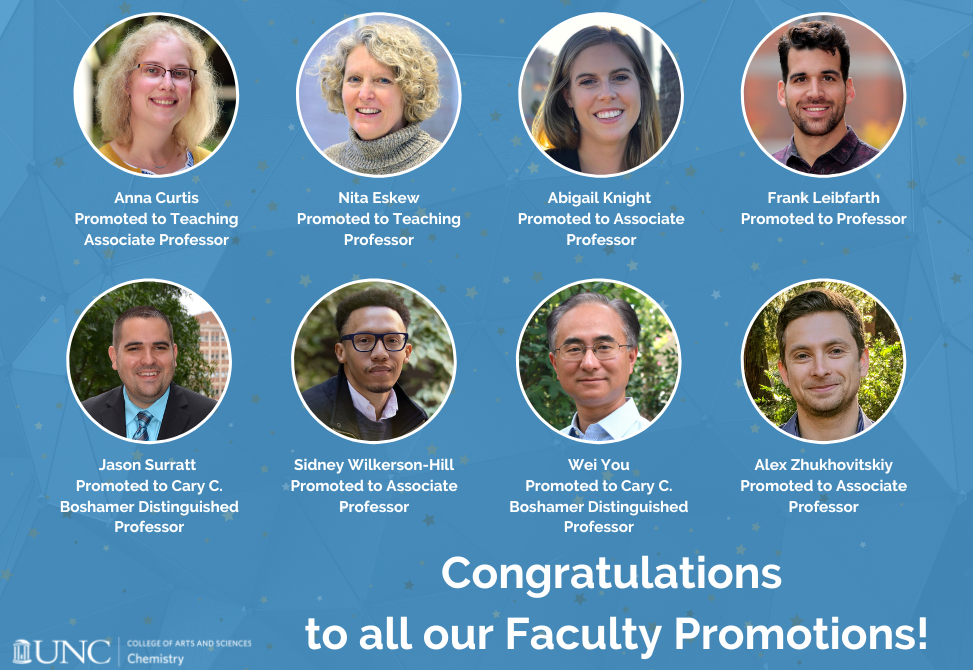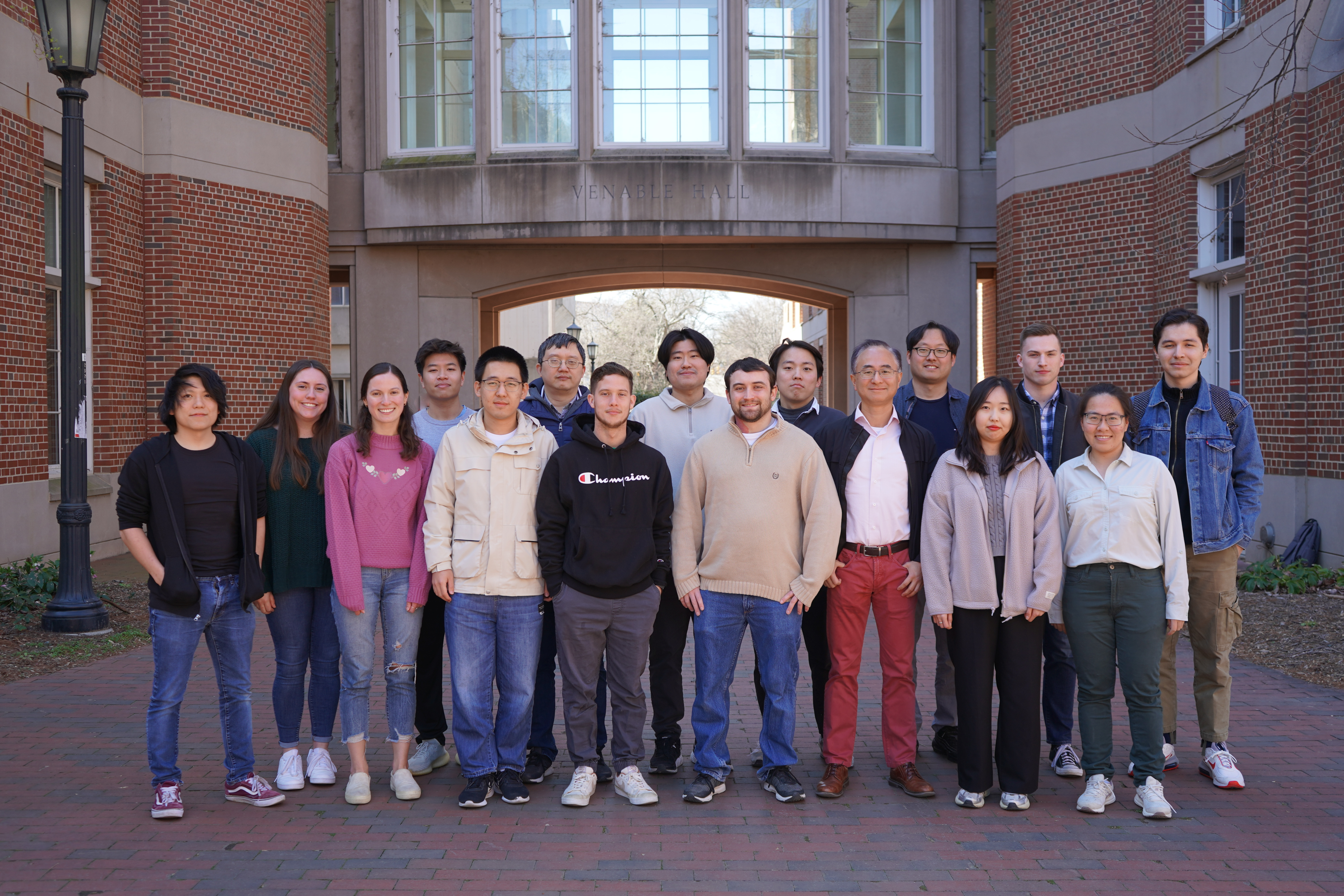Faculty Members

Sidney Wilkerson-Hill
Associate Professor
Venable Hall 1311919-962-7775
smwhill@email.unc.edu
Group Website
Curriculum Vitae
Research Interests
Research Synopsis
The goal of the Hill group is to develop new reactions to obtain pyrethroids, small molecules used to combat vectors for malaria (e.g., Anopheles gambiae). We are particularly interested in identifying new small molecule pyrethroids with enhanced photostability, reduced off target toxicological properties to beneficial pollinators, and reduced insect resistance profiles. To accomplish these goals, my research group is developing new routes to orphaned cyclopropanes, a structural motif found in all pyrethroids, by using 1) biomimicry and frustrated Lewis acid-base pairs (FLP’s), 2) reagent-based approaches toward natural product families; and 3) chemotype-centric approaches using sulfones as non-stabilized carbene equivalents. These methods to obtain orphaned cyclopropanes also enable the discovery of new cyclopropane-containing medicines, since they permit rational structure activity relationship studies at the 1,1-dialkyl position - a traditionally understudied portion of chemical space.
Professional Background
Sidney Hill was raised in Kinston, North Carolina and conducted undergraduate studies at North Carolina State University. There, he obtained a B.S. in Polymer and Color Chemistry through the College of Textiles, a B.S. in Chemistry through the College of Physical and Mathematical Sciences, Summa Cum Laude, Phi Beta Kappa, in 2010.
In 2015, Sidney received his Ph.D. under the supervision of Prof. Richmond Sarpong from the University of California, Berkeley where his researched focused on using transition metal-catalyzed cycloisomerization reactions to access natural product scaffolds. Then, he was a UNCF-Merck postdoctoral fellow with Prof. Huw Davies at Emory University in Atlanta, GA where his research focused on developing novel reactions using N-sulfonyltriazoles and rhodium tetracarboxylate catalysts for C–H functionalization reactions. During his graduate studies, Sidney was also involved in diversity initiatives such as the Berkeley Science Network, and California Alliance programs to address disparities facing minorities pursuing careers in the physical sciences. Since starting at UNC, he has received the ACS Herman Frasch Foundation grant, NSF CAREER Award, Alfred P. Sloan Fellowship, Eli Lilly ACC Grantee Award, FMC Young Investigator Award, the ACS Organic Letters Lectureship, and the Thieme Journal Award.
Research Group
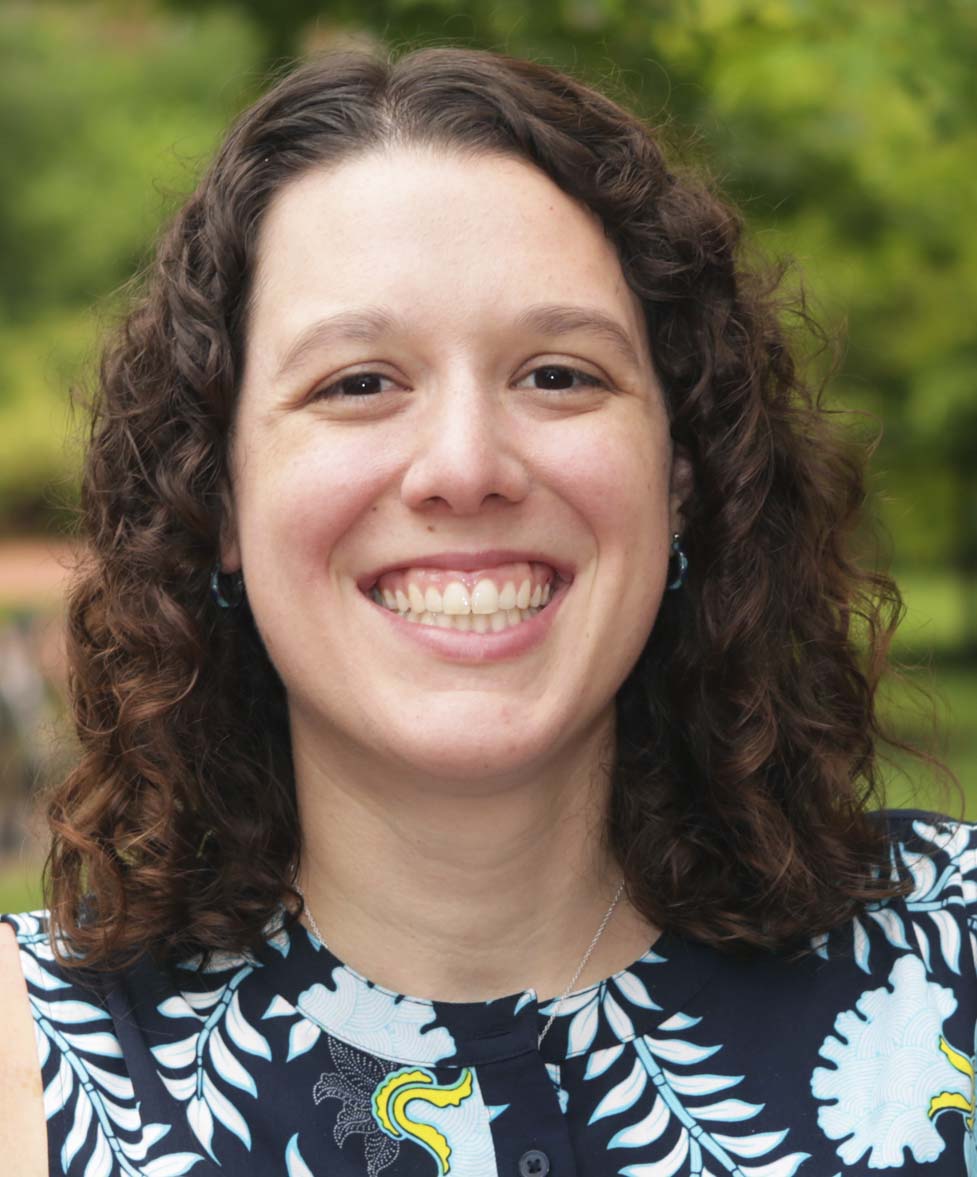
Danielle Zurcher
Teaching Associate Professor
Kenan Laboratories C147A919-962-2541
zurcherd@email.unc.edu
Curriculum Vitae
Research Interests
Polymer and Organic Chemistry
Research Synopsis
My training has been at the intersection of polymer and organic chemistry to design and improve novel materials for sensing toxic water contaminants. Additionally, I have experience in developing curriculum for organic laboratory courses and polymer outreach activities. My current interests lie in curriculum development for large introductory courses. I am committed to finding and implementing effective teaching methods that promote student engagement and develop their critical thinking skills.
Professional Background
Wayne State University, B. S., 2010; University of Michigan, Ph.D., 2016; University of Michigan, Postdoctoral Researcher/Lecturer, 2016-2017
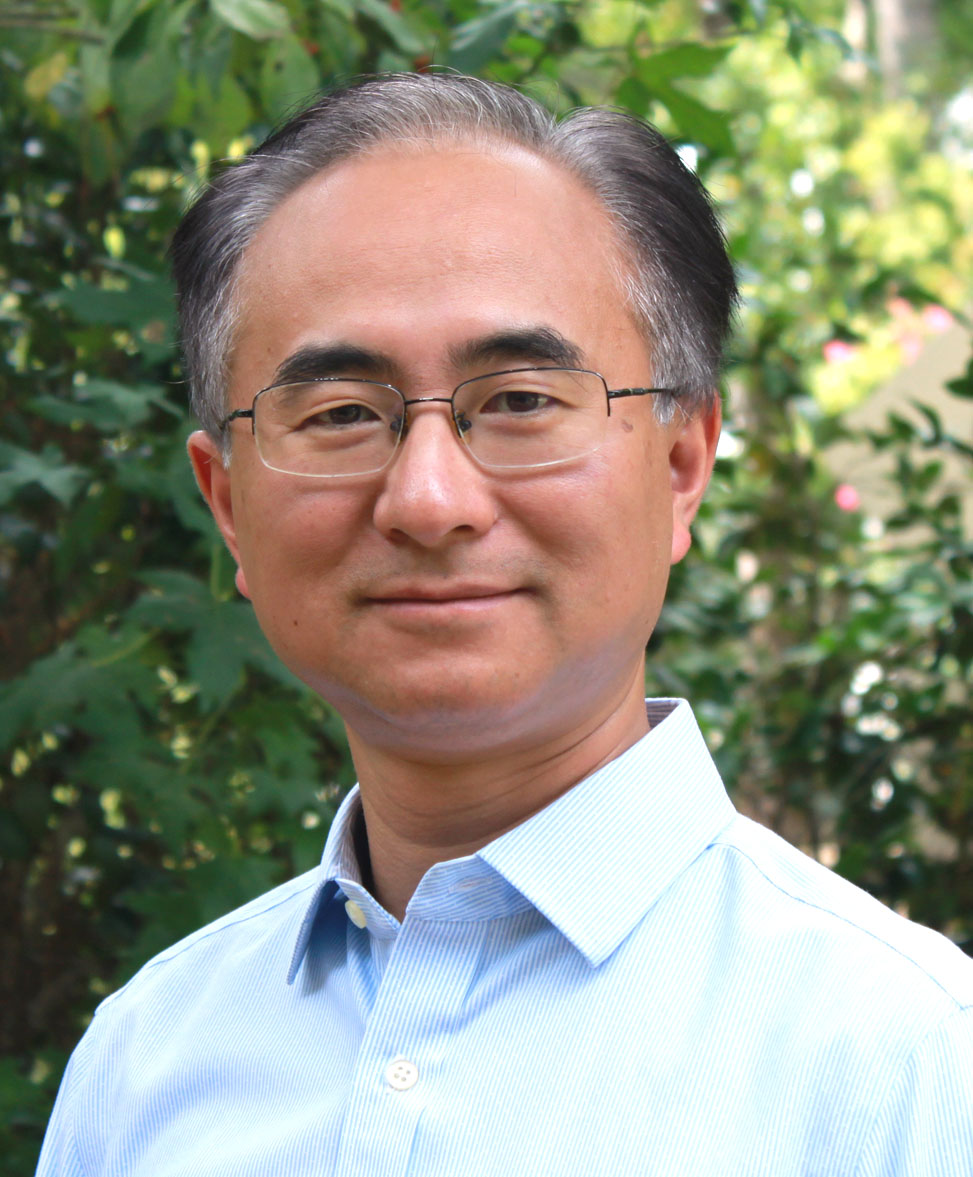
Wei You
Cary C. Boshamer Distinguished Professor of Chemistry and Applied Physical Sciences
Kenan Laboratories C540919-962-6197
wyou@email.unc.edu
Group Website
Curriculum Vitae
Research Interests
Organic/Polymer Synthesis, Solar Cells, Molecular Electronics/Spintronics
Research Synopsis
Given the interdisciplinary nature of our research projects, it is rather difficult — and perhaps unnecessary — to put a specific label on individual projects. In terms of applications, we are researching solar cells, electronic/spintronic devices, dental/bone repair, and cancer curing, among others. Regarding materials we are actively developing include conjugated organic/polymers, biocompatible polymers, traditional polymers, and inorganic/organic hybrids. Our strengths are in chemistry, including design and synthesis of organic molecules and polymers, and also exploring new polymerization methodologies. Our mission is to apply innovative approaches to develop novel materials for various applications. You can visit our group website for more information and related publications
Professional Background
B.S., Chemistry, University of Science and Technology of China, 1999; Ph.D., Organic/Polymer Chemistry, University of Chicago, 2004; Postdoctoral Fellow, Stanford University, 2004-2006; Excellent Student Fellowship, First Prize, from University of Science and Technology of China, Hefei, Anhui, P. R. China, 1995; Panasonic Scholarship, 1996; P&G Scholarship, 1997; Excellent Student Fellowship, 1998; Excellent Thesis of USTC, 1999; Outstanding Leadership and Dedication, Consulate General of the People's Republic of China, 2002; Excellence in Graduate Polymer Research, American Chemical Society, 2004; DuPont Science and Engineering Grant, 2007-2008; DuPont Young Professor Award, 2008-2010; R.J. Reynolds Junior Faculty Development Award, 2008-2009; NSF CAREER Award, 2010-2015; Tanner Award for Excellence in Undergraduate Teaching, 2011; Camille Dreyfus Teacher-Scholar Award, 2011; CAPA Distinguished Junior Faculty Award, 2012; Two publications were "the hottest research of 2011" by Thomas Reuters, 2012; One publication was selected as one of the top 9 articles out of 1300+ for "Best of Macromolecular Journals 2012" by Wiley, 2013; Ruth and Phillip Hettleman Prize for Artistic and Scholarly Achievement, 2013; Fellow of Royal Society of Chemistry, FRSC, 2017; “World Highly Cited Researchers” by Web of Science Group, 2019; Nano Research Young Innovator Award in Nanoenergy, Springer, 2019.
Research Group
The You Group focuses on the synthesis and characterization of novel multifunctional materials for a variety of applications, predominately in electronics and photonics. Our approaches are truly interdisciplinary, interfacing chemistry, physics, materials science and engineering. Students and postdoctoral fellows in the group are exposed to and trained in organic and polymer synthesis, surface chemistry, nano-patterning, device fabrication and physical properties characterization using state-of-the-art instrumentation.
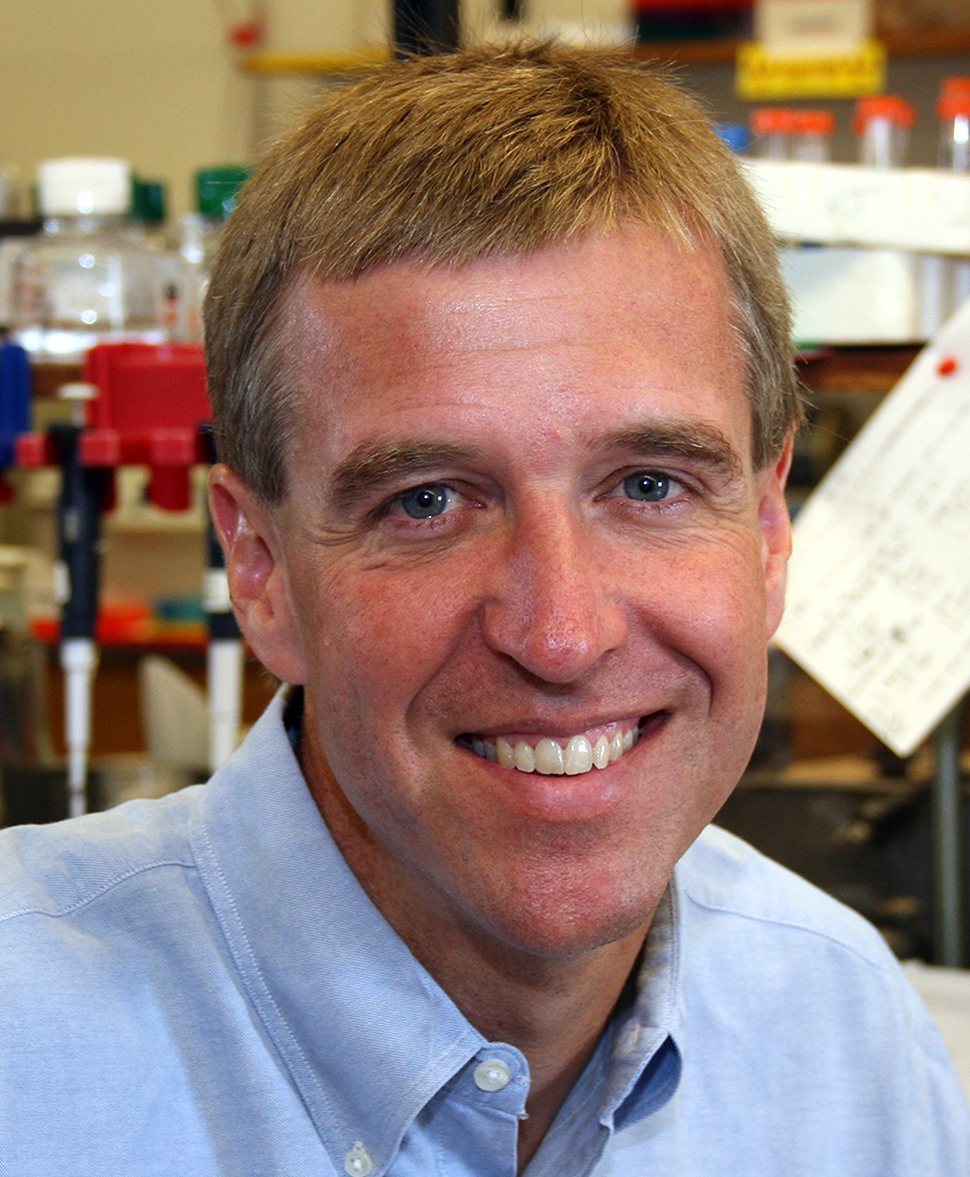
Kevin Weeks
Kenan Distinguished Professor
Genome Sciences Building 3258919-962-7486
weeks@unc.edu
Group Website
Curriculum Vitae
Research Interests
Chemical Biology, RNA Structure & Function, RNA Therapeutics
Research Synopsis
Research in the Weeks group lies at the interface of chemistry, biology and genomics. One of the most amazing discoveries of recent years has been the profound role of RNA in regulating all areas of biology. For example, a much larger fraction of the human genome is transcribed into RNA than codes for protein synthesis. Further, the functions of many RNA molecules require that an RNA fold back on itself to create intricately and complexly folded structures. Until recently, however, we had little idea of the broad contributions of RNA structure and function because there simply did not exist rigorous chemical tools for understanding RNA molecules in cells and viruses.
The vision of our laboratory is therefore, first, to invent novel chemical microscopes that reveal quantitative structure and function interrelationships for RNA and, second, to apply these RNA technologies to broadly important problems in biology.
Our work is highly interdisciplinary. Projects in the laboratory meld fundamental basic science chemistry, computational chemistry, and biotechnology development and extend to practical applications in virology, high-throughput RNA structure analysis, and understanding biological processes in cells.
Current projects focus on (i) RNA folding and protein assembly reactions central to the replication of human viruses, including HIV and Dengue, (ii) function of biomedically important RNA-protein complexes inside living cells, and (iii) discovery of small molecule ligands, potential drugs, targeted against medically important RNAs.
Professional Background
Fulbright Scholar, Universität Göttingen, Germany, 1987; Yale University, Ph.D., 1992; Jane Coffin Childs Postdoctoral Fellow, University of Colorado, 1992-1996; Research Innovation Award, Research Corporation, 1997; Searle Scholar in the Biomedical Sciences, 1998-2001; NSF Career Award, 2000-2005; Visiting Scholar, National Institutes of Health, NIEHS, 2002-2003; North Carolina Health & Life Sciences Promise for Tomorrow Award, 2009; NIH EUREKA Award, 2011-2015; Fellow, American Association for the Advancement of Science, 2012; Kenan Senior Faculty Competitive Research and Scholarly Leave, 2013; Life Member, Clare Hall, University of Cambridge, UK, 2014
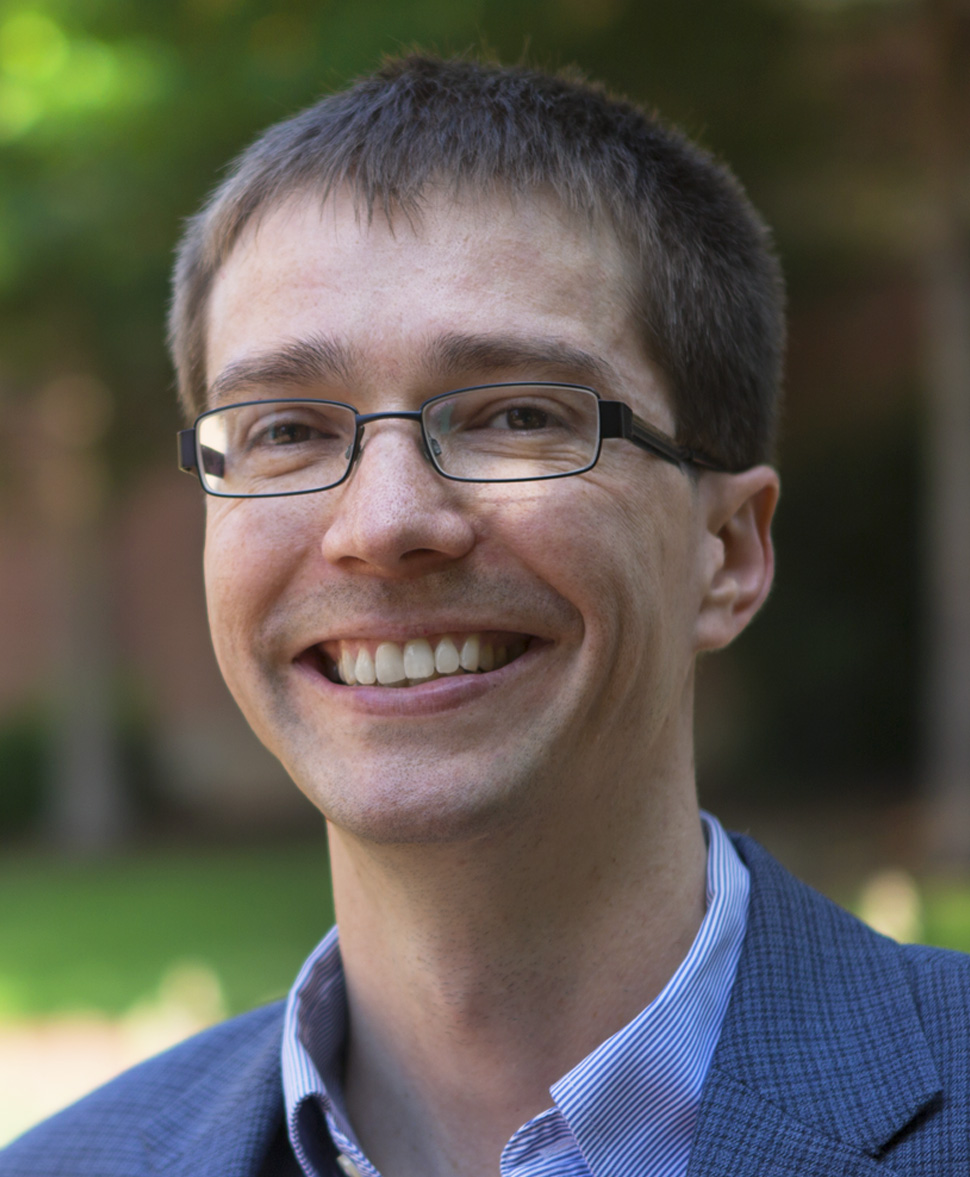
Scott Warren
Associate Professor
Kenan Laboratories A808919-966-0994
scw@email.unc.edu
Group Website
Curriculum Vitae
Research Interests
2D Materials, Energy Storage, Solar Energy, Nanoelectronics
Research Synopsis
2D materials are a radically new building block for constructing complex materials and devices, from batteries to solar cells to water purification to sensors. Our lab is focused on:
1. The discovery of new 2D materials
2. The assembly of these building blocks into functional architectures
3. Understanding structure-property relationships in 2D materials and their assemblies
4. Integrating these new materials into devices for energy conversion, environmental remediation, and sensing
Our lab is interdisciplinary and collaborative, and we draw on both experimental approaches, such as materials synthesis, electrochemistry, electronics, nanophotonics, and electron microscopy, and computational approaches, such as density functional theory, finite difference time domain simulations, and multislice calculations, to understand the materials that we make.
Professional Background
Research Group
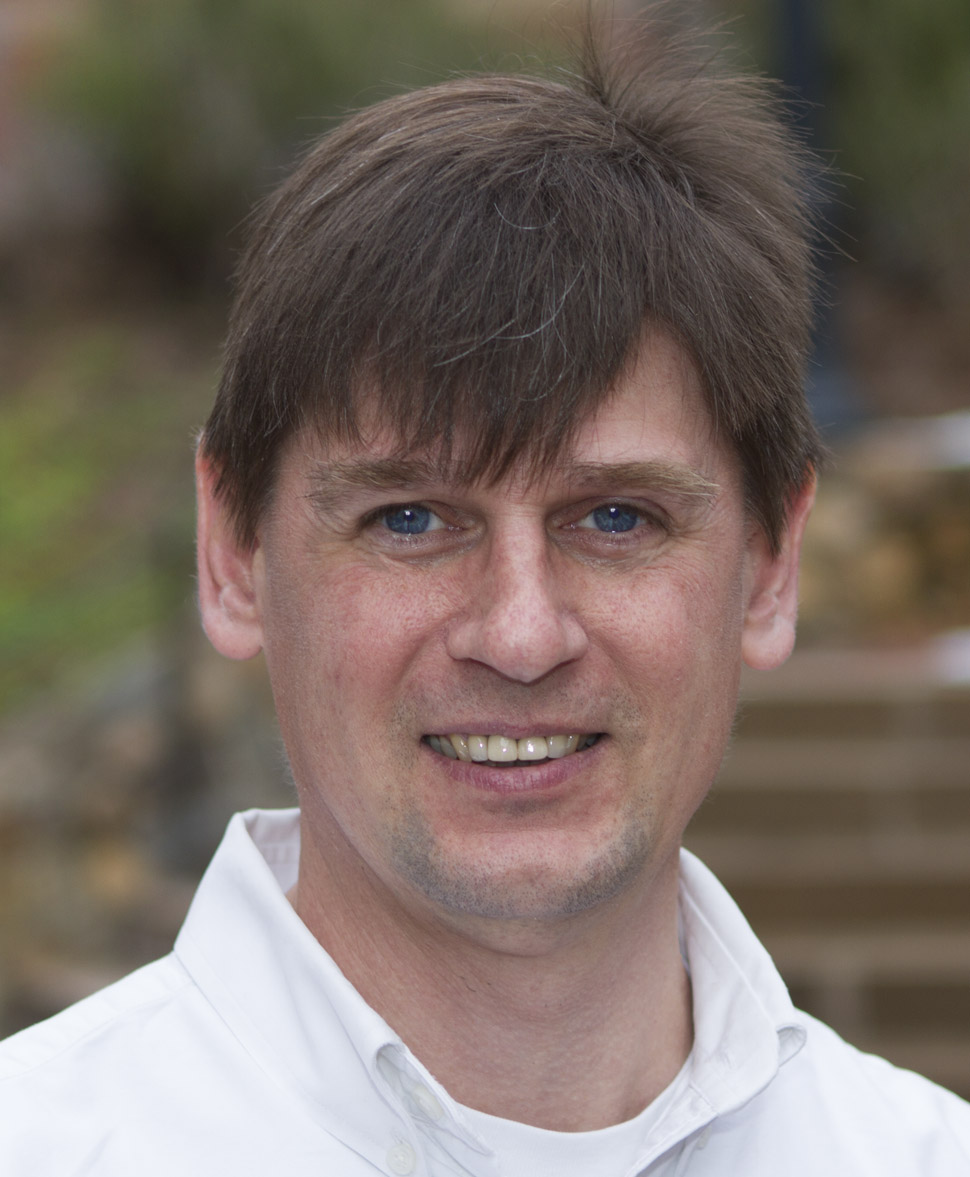
Domenic Tiani
Teaching Professor
Kenan Laboratories B128919-962-1616
tiani@email.unc.edu
Curriculum Vitae
Research Interests
Chemistry Education, Lab Curriculum Development
Research Synopsis
My primary research interests lie in the area of chemical education. In particular, I am interested in the development and implementation of new and better methods by which to teach fundamental chemical concepts in the classroom and laboratory. As a chemical educator my objectives are to: Provide a challenging and stimulating learning environment, one in which students are active participants in the learning process. Provide connectivity between what they learn in the classroom, what they do in the laboratory and what they see in the world around them. Train students to think critically and be problem solvers. Develop research projects focused on investigating fundamentally important and interesting chemical problems, and involve undergraduate students in these projects. Currently my role in the undergraduate chemistry program at UNC-CH involves undergraduate instruction, curriculum development and the training/supervision of graduate students as laboratory teaching assistants. With regards to curriculum development, I am involved with the "Separation and Analytical Characterization of Organic and Biological Compounds" laboratory course. My role in this course is three-fold. First, I ensure that the laboratory manual/material is current and is a useful text/resource for those students taking the course. Secondly, I work to develop experiments for this course that are relevant and in-line with the course objectives. Finally, I work to make sure that the laboratory resources, such as computers, software and instrumentation, remain current so that students continue to learn a variety of modern experimental techniques. All of the above objectives are each important in guaranteeing that a student's learning experience at UNC-CH is both meaningful and rewarding.
Professional Background
North Carolina State University, B. A., 1995; Phi Beta Kappa, NCSU, 1995; Phi Kappa Phi, NCSU, 1995; Laboratory Technician, LabCorp, 1996-1997; Laboratorian of the Year, LabCorp, 1997; University of Arizona, Ph.D., 1997-2003; Graduate Teaching Award, University of Arizona, 1998; Lecturer Adjunct Professor in Chemistry, University of Arizona, 2002-2003; Tanner Award for Excellence in Undergraduate Teaching, 2016
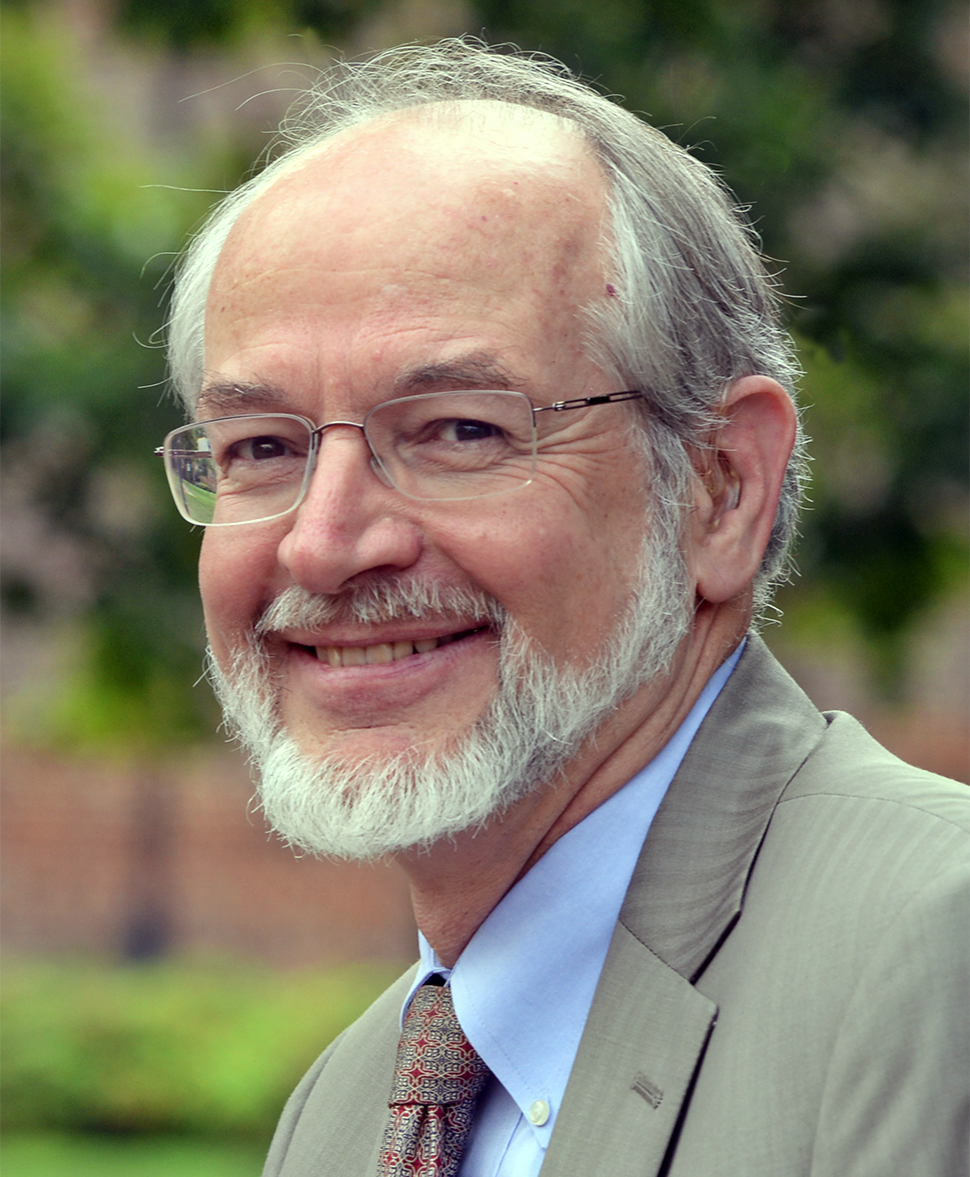
Joseph Templeton
Francis Preston Venable Professor of Chemistry
Kenan Laboratories 448919-966-4575
joetemp@unc.edu
Curriculum Vitae
Research Interests
Organometallic Chemistry
Research Synopsis
Organometallic projects currently underway in our laboratory involve bond activation with platinum and palladium, tungsten carbene and carbyne chemistry, and stereoselective addition reactions of coordinated ligands. Three specific projects are summarized below.
The utility of transition metal carbene reagents has blossomed dramatically during the past decade. Electron-rich carbene complexes, [Tp'(OC)2W=CHR]- anions have been prepared, and these complexes exhibit unusual reactivity patterns at the carbene carbon. The availability of a heteroatom carbene complex, Tp'I(O)W=C(CH3)(OSiR3), in the Schrock manifold of oxidation states provides an opportunity to define the reactivity patterns available to this class of carbene complexes.
We have developed robust Pt(IV) organometallic complexes containing alkyl, hydride, aryl, acyl, formyl and silyl ligands in various combinations with Tp' anchoring the octahedral coordination sphere. The relevance of Pt(II)/Pt(IV) interconversions to alkane activation processes provide the driving force for these synthetic efforts.
The chiral [Tp'W(CO)(PhCºCR)]+ fragment binds ketones and imines. These coordinated ketones or imines readily add nucleophiles at carbon, and we are exploring the stereochemistry of the reduced products.
Professional Background
Iowa State University, Ph.D., 1975; Postdoctoral research as NATO fellow at Imperial College of Science and Technology, 1975-1976; Fellow, American Association for the Advancement of Science.
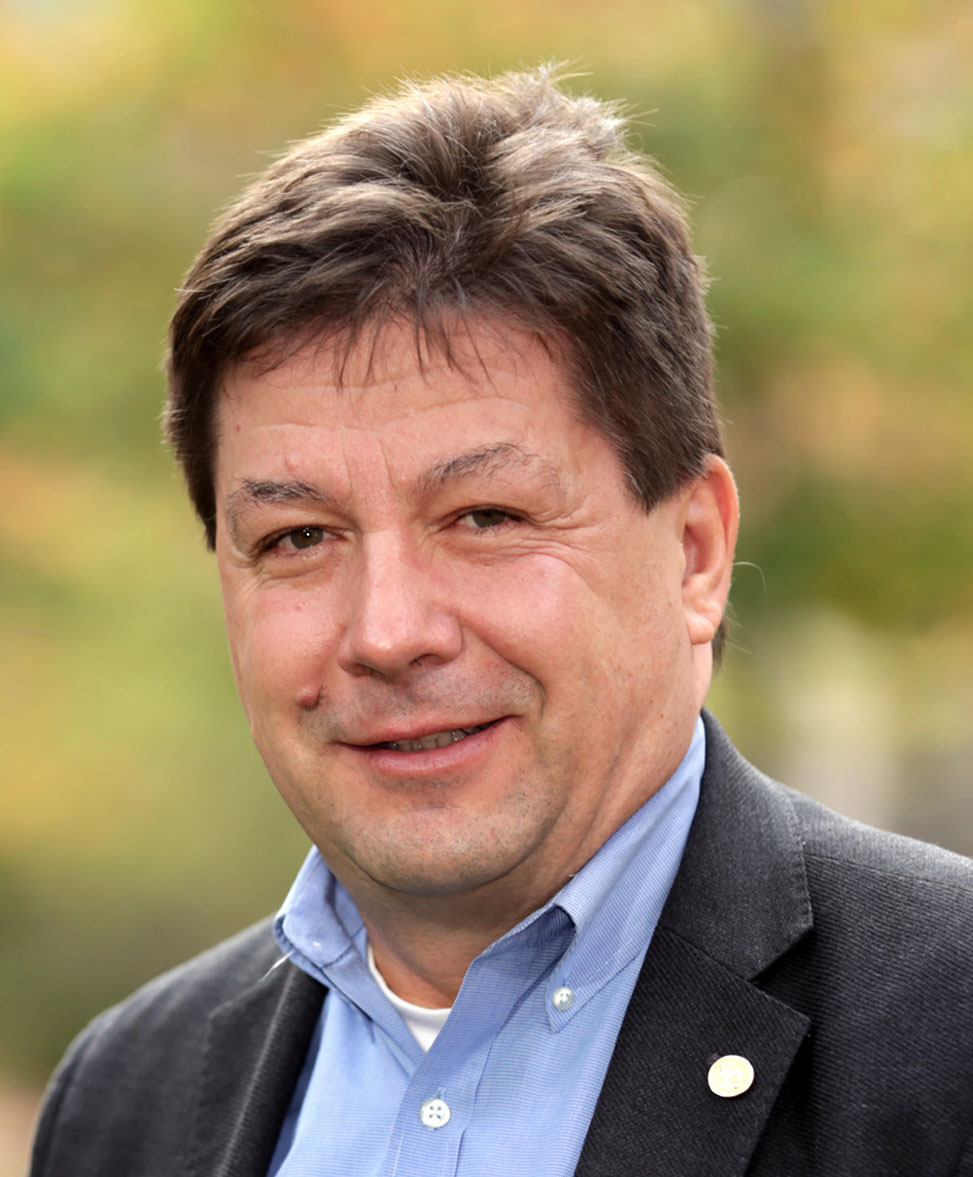
Sergei Sheiko
George A. Bush, Jr. Distinguished Professor
Caudill Laboratories 157919-843-5270
sergei@email.unc.edu
Group Website
Curriculum Vitae
Research Interests
Tissue-Adaptive Materials, Programmable Materials Design, and Reconfigurable Polymer Networks
Research Synopsis
Materials science strives for intelligent soft materials that are able to sense, process, and adapt to their environment. Applications range from tissue engineering and microelectronics to renewable energy and climate change.
Within this broad area of research, we are particularly interested in the programmable design of tissue-mimetic materials for biomedical devices, soft robotics, and wearable electronics. We want to develop macromolecules that self-assemble to elastomers and gels that precisely replicate the mechanics of living tissues ranging from brain to skin. Unlike conventional trial-and-error experimentation with chemical formulations, our approach is based on encoding materials properties in molecular architecture. In line with artificial intelligence, the design-by-architecture approach enables the efficient synthesis of well-defined materials with predictable properties that can be adjusted on demand for customizable applications, particularly personalized medicine. We are currently developing chemistry for minimally invasive injection and insertion of non-leaching implants to the human body followed by an adaptive matching to the surrounding tissue mechanics. This platform can be readily extended to 3D printing, injection molding of biomedical devices, and waste-free plastics upcycling.
Professional Background
Fellow, American Physical Society, 2010, Professor, University of North Carolina at Chapel Hill, 2001-present, Habilitation - University of Ulm, Germany, 2001, Postdoctoral Fellow - University of Twente, The Netherlands, 1991-1993, PhD - Institute of Chemical Physics of the Russian Academy of Sciences, 1991, BS - Moscow Physico-Technical Institute, 1986.
Research Group
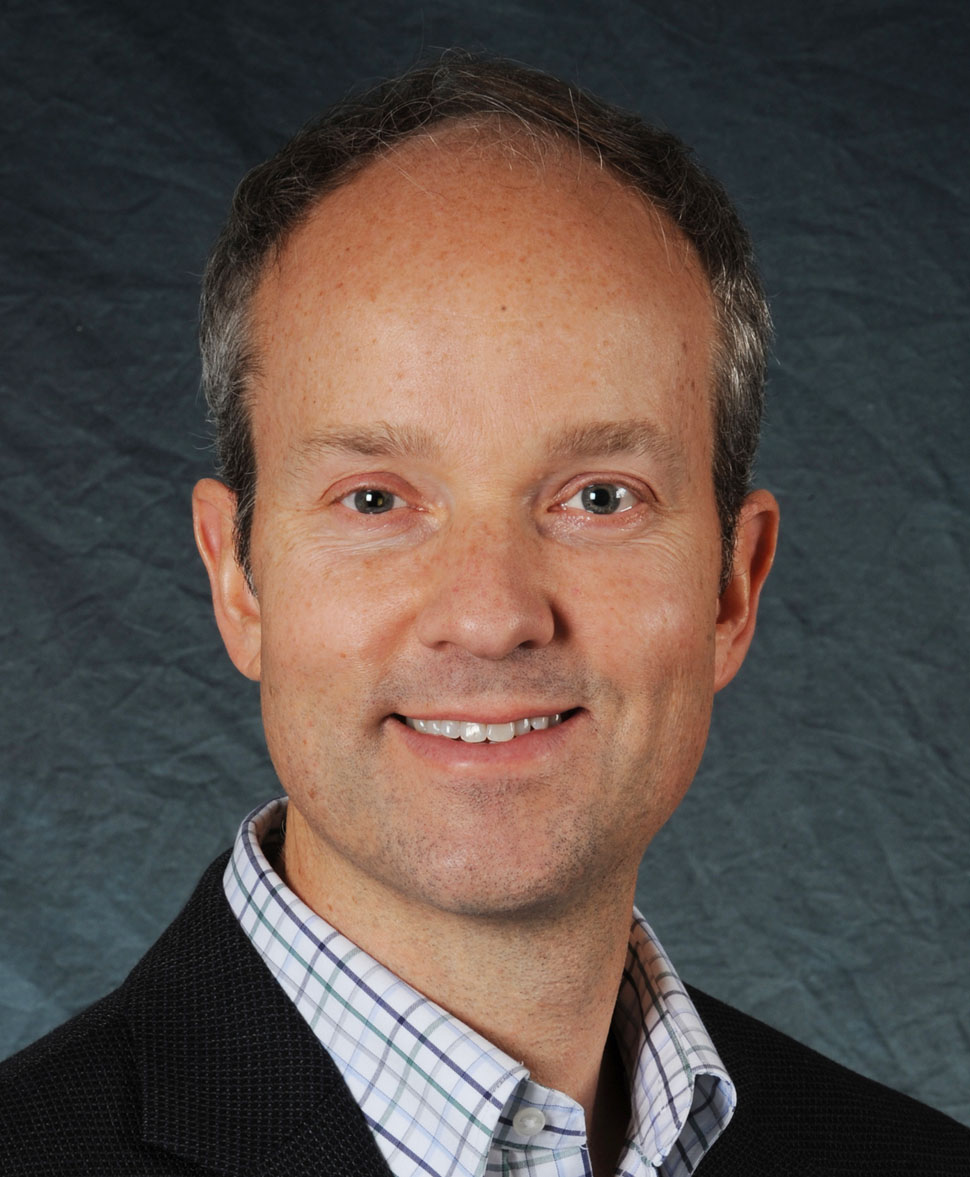
Mark Schoenfisch
Peter A. Ornstein Distinguished Professor, Jointly appointed with the School of Medicine & School of Pharmacy
Caudill Laboratories 336919-843-8714
schoenfisch@unc.edu
Group Website
Curriculum Vitae
Research Interests
Analytical Sensors, Biomaterials & Nanoparticle Therapeutics
Research Synopsis
Our research is focused on four main areas: 1) designing macromolecular nitric oxide release vehicles as novel therapeutics; 2) improving the analytical performance of implantable continuous glucose monitoring devices for diabetes management; 3) designing microfluidic nitric oxide, NO, sensors for real-time detection of NO in biological media; and, 4) developing superhydrophobic interfaces for mold prevention and remediation.
In the Schoenfisch Lab, we work at the interface of analytical chemistry, materials science, biomedical engineering, and biology. The types of multi-disciplinary research opportunities that are available include studies of therapeutics to treat various diseases; sensors that function reliably and continuously, real time, to facilitate disease management; microelectrode and microfluidic sensor design and fabrication for clinical, point-of-care, and diagnostic/prognostic applications; and, new macromolecular scaffolds that manipulate biology and physiology.
Professional Background
University of Kansas, B.A., 1992; University of Arizona, Ph.D., 1997; University of Michigan, National Institutes of Health Postdoctoral Fellow, 1998-1999; Society for Analytical Chemists of Pittsburgh Young Investigator Award, 2001; Eli Lilly and Company Young Investigator Award, 2002-2004; National Science Foundation CAREER Award, 2004-2009; International Union of Pure and Applied Chemistry Young Observer Award , 2005; John L. Sanders Award for Excellence in Undergraduate Teaching and Service, 2007; Chapman Family Teaching Award for Distinguished Teaching of Undergraduate Students, 2015
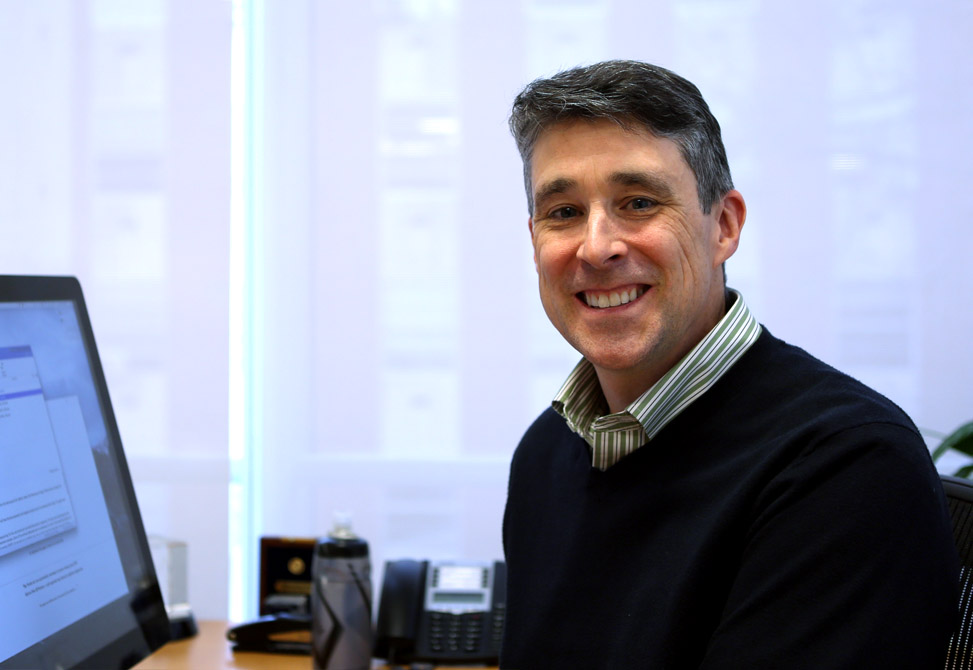
Matthew Redinbo
Kenan Distinguished Professor of Chemistry, Biochemistry and Microbiology, Jointly appointed with the School of Medicine
Genome Sciences Building 4350919-962-4581
redinbo@unc.edu
Group Website
Curriculum Vitae
Research Interests
Understanding Human Disease using Structural and Chemical Biology
Research Synopsis
Inhibitors Intercept the Catalytic Cycle of Gut Microbial Enzymes
In research published in ACS Central Science, researchers led by Matthew Redinbo, and in work largely conducted by graduate student Samuel Pellock, demonstrate that unique chemotypes can inhibit gut microbial b-glucuronidase, GUS, enzymes by high-jacking the catalytic cycle of these well-studied proteins.
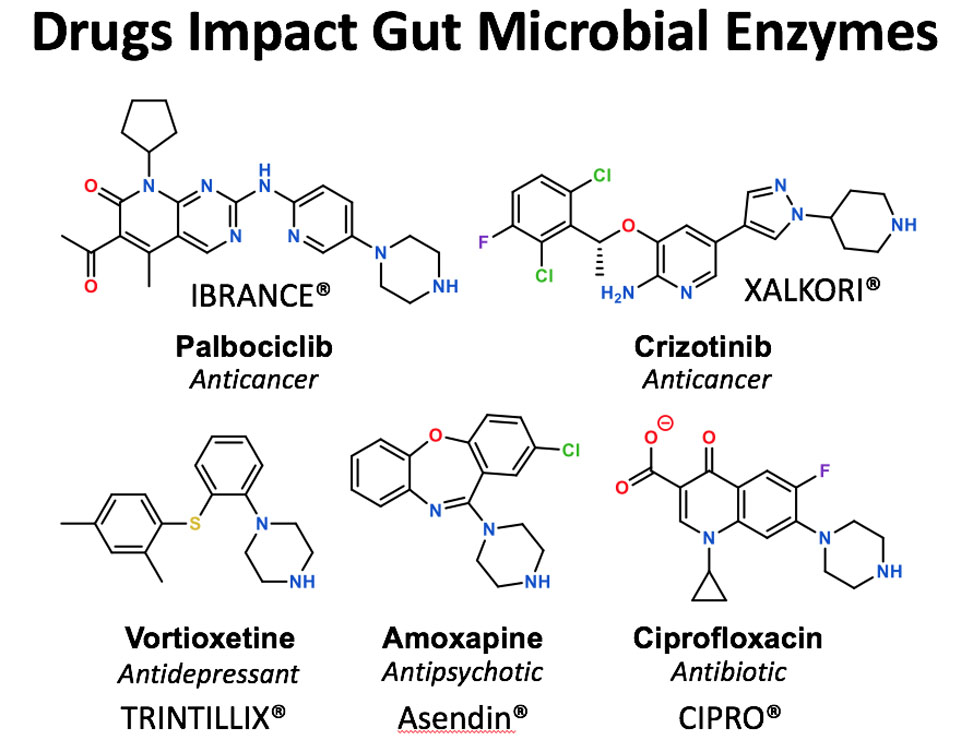
GUS enzymes are members of the glycoside hydrolase family of enzymes, some of the first examined in detail. Yet, in spite of decades of effort, the work presented by Pellock and colleagues shows that distinct, piperizine-containing compounds, including many current drugs, can potently inhibit the reactions carried out by these enzymes by replacing water in the second half of their catalytic cycle. The research suggests that GUS enzymes in the gut can be potently controlled using these reagents.
Gut microbial GUS proteins are important for the efficacy and tolerance of a wide range of drugs, which reach the gut as drug-glucuronides and can serve as GUS substrates. Blocking the reactivation of drugs in the gut using such reagents has been shown by Redinbo and collaborators to block the toxicity of cancer drugs and NSAIDs. This work further shows that existing drugs are impacting the gut microbiota in previously unknown ways, and with consequences that have yet to be appreciated.
Transcriptional Regulation in Gut Microbial Pathogens
Work published in PNAS by graduate student Michael Little, and led by Professor Matthew Redinbo, has shown for the first time how a group of gut microbial pathogens control the expression of a key operon of factors when a certain source of energy is available. They have focused on the Enterobacteriaceae, a family of opportunistic gut bacterial pathogens that include microbes like Salmonella, Shigella, Yersinia and Escherichia coli. These bacteria can grow up in the damaged GI tract and lead to local or systemic infections, and they are unique in the gut microbial world in that they encode their b-glucuronidase, GUS, enzyme and related glucuronide scavenging machinery on a operon controlled by a single transcription factor, GusR.
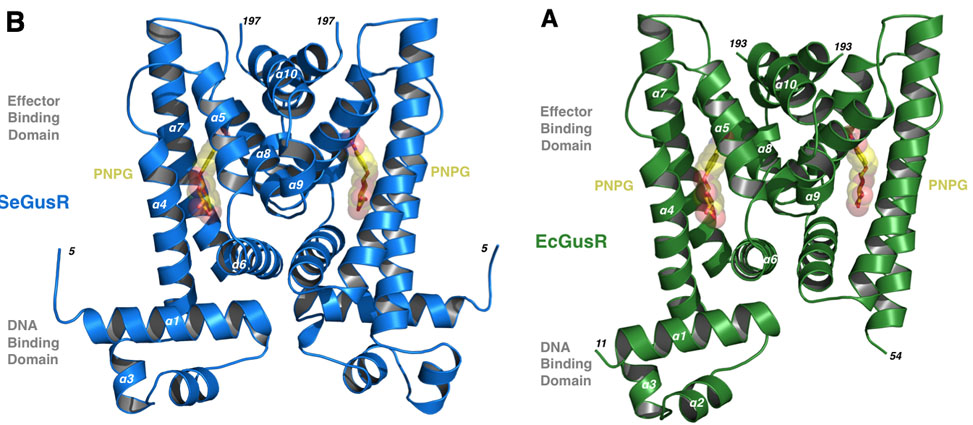
In work by Little and colleagues, the structures of GusR proteins from Salmonella and E. coli are presented, and they are shown to respond to glucuronide conjugates found in the human GI tract, and in response to these compound they up-regulate the expression of GUS activity. This work shows that these relatively trace organisms in the complex gut microbial milieu have a "turbo-charger" to express GUS to get the glucuronide sugar as an energy source, and suggest that these microbes may be reliant on GusR and GUS during infection, which could lead to new therapeutics to block subsequent infections.
Discovery Blocks Cancer Drug's Toxic Side Effect
Findings published in Science from the Redinbo Group, in collaboration with UNC School of Medicine, the Albert Einstein College of Medicine, and North Carolina Central University, may lead to the elimination of a debilitating side effect of CPT-11, a widely used but harshly potent treatment for colon cancer.
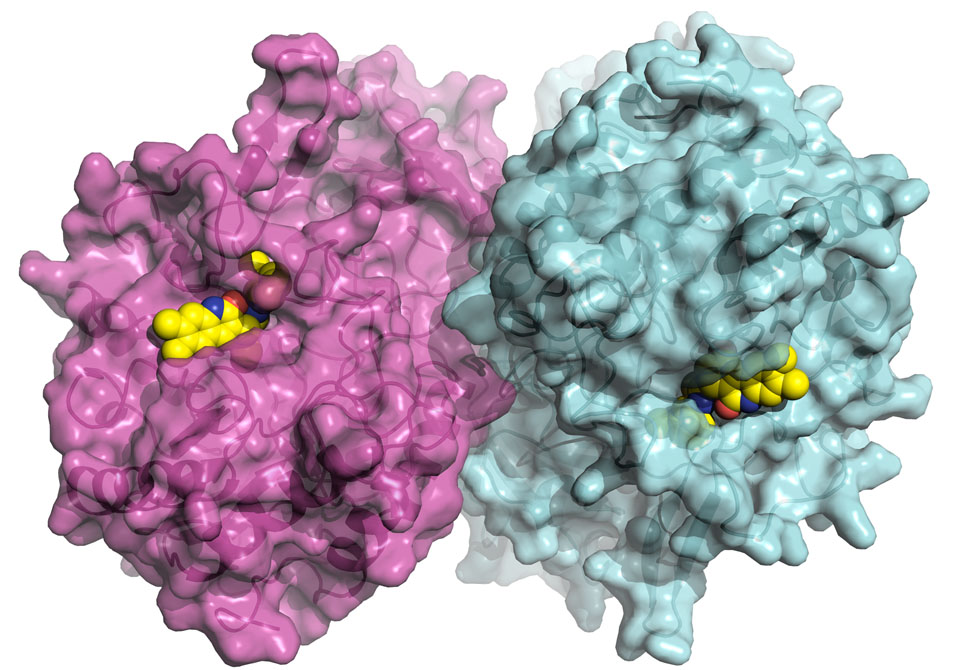
The team of researchers, led by chemistry professor Matthew Redinbo from the University of North Carolina at Chapel Hill, has discovered that it is possible to target and block the enzyme, beta glucuronidase, which is thought to play a major role in causing the drug's side effects. "In a manner of speaking, we cured the bacteria's sweet tooth without damaging the microbes or intestines and, in the process, the drug's toxic side effect was alleviated," said Redinbo.
Study co-author, Sridhar Mani, professor of medicine and genetics at Einstein, said the severe diarrhea caused by CPT-11 can sharply limit the dosage that cancer patients can receive. "Our tests showed conclusively that the inhibitor identified by our UNC colleagues prevented diarrhea in mice that were also receiving CPT-11. We are hopeful that clinical trials will show that administering this inhibitor when patients start taking CPT-11 allows for improvement in the drug's anti-tumor effect in patients with cancer."
Listen to "The Story" interview with Dick Gordon on WUNC, November 9, 2010
Professional Background
B.S., 1990, University of California, Davis; Ph.D., 1995, University of California, Los Angeles; Postdoctoral Fellow, 1995-1999, University of Washington, Seattle; Visiting Professor, 2013-2014, SGC, Nuffield Department of Medicine; and Visiting Fellow, Magdalen College; Oxford University; Outstanding Mentor Award, 2018; Fellow, AAAS, 2013; Academic Leadership Fellow, UNC, 2011; Phillip and Ruth Hettleman Prize for Artistic and Scholarly Achievement, 2004; Burroughs Wellcome Career Award in the Biomedical Sciences 1999
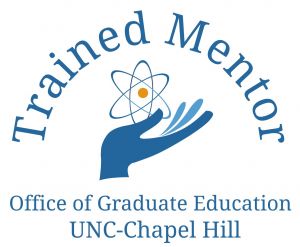
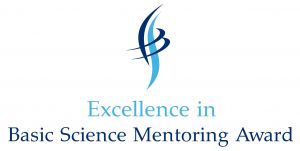
Research Group
Researchers in the Redinbo Laboratory use the tools of structural, molecular and chemical biology to examine a range of dynamic cellular processes central to human health.
Current projects include the discovery of new antimicrobials targeted to drug-resistant bacteria, the design of novel proteins engineered to detect and eliminate toxic chemicals, and the development of small-molecule to cell-based methods to improve anticancer chemotherapeutics.
We also continue our focus on determining the crystal structures of macromolecular complexes, including those involving human nuclear receptors central to transcriptional regulation, bacterial proteins involved in DNA manipulation and human cell contact, and enzymes central to key cellular processes.



